Auto Tech
The Pedal Commander: Unleashing Your Vehicle’s True Potential
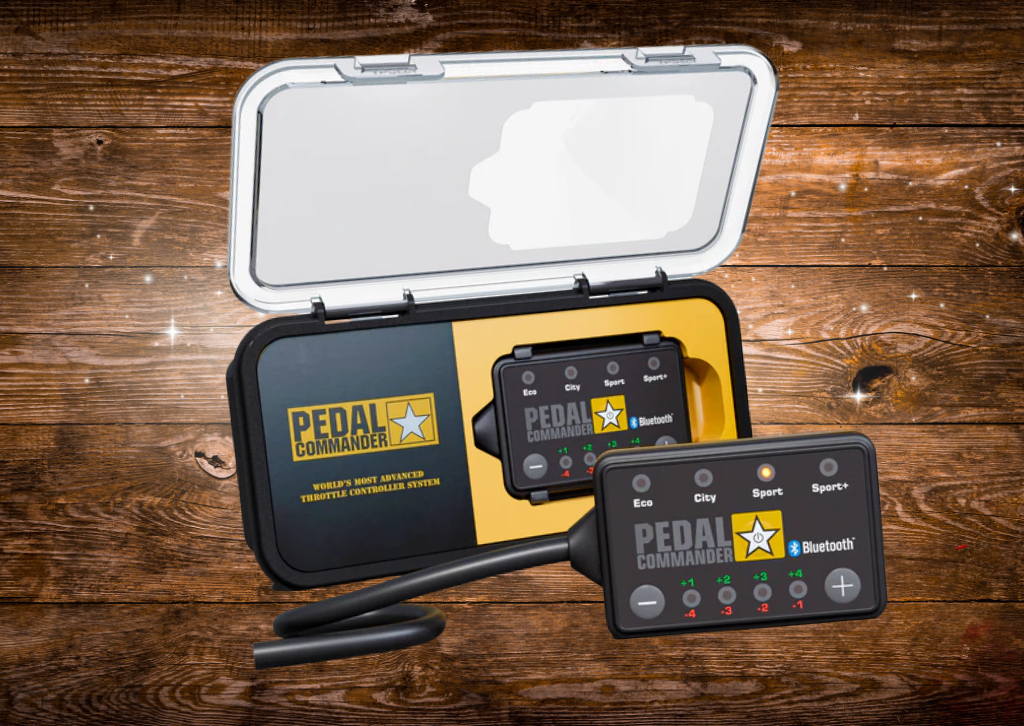
The Pedal Commander
In the realm of automotive performance, enthusiasts are constantly seeking ways to optimize their vehicles for a more engaging driving experience. While traditional engine tunes and hardware upgrades often come with significant costs and potential warranty concerns, a more accessible solution has gained considerable traction: the throttle response controller. Among these, the Pedal Commander stands out as a prominent player, promising to eliminate throttle lag and deliver instant, customizable acceleration. But does it live up to the hype? Let’s dive deep into what the Pedal Commander offers, how it works, and whether it’s the right upgrade for your ride.
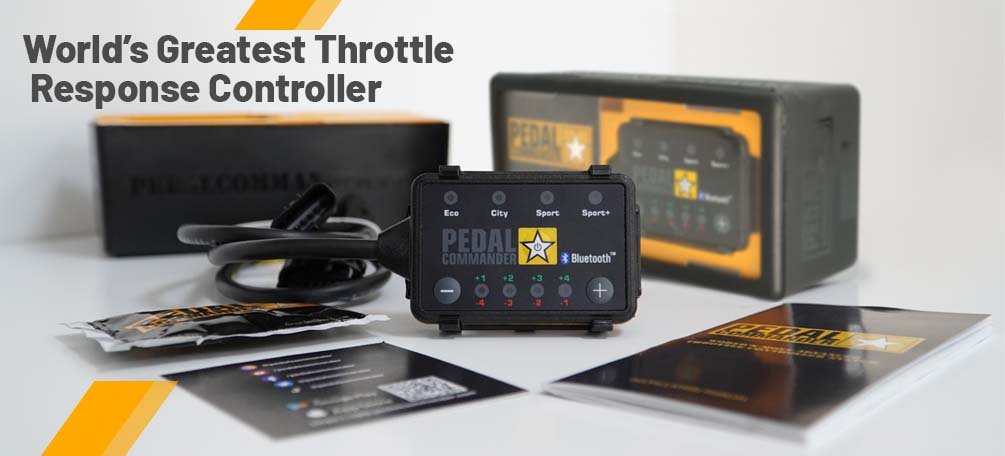
What is the Pedal Commander and How Does It Work?
Modern vehicles predominantly utilize a “drive-by-wire” electronic throttle system, replacing the old mechanical cable that directly connected the accelerator pedal to the throttle body. While this system offers benefits like improved fuel economy and advanced electronic controls, it often introduces a noticeable delay, or “throttle lag,” between pressing the accelerator and the engine’s actual response. This delay is often a result of manufacturers programming a more subdued throttle response for a broader range of drivers and to meet emissions regulations.
The Pedal Commander is an electronic throttle response controller designed to eliminate this inherent delay. It’s a compact device that installs in-line with your vehicle’s accelerator pedal sensor. Here’s a breakdown of how it works:
- Intercepts the Signal: When you press your accelerator pedal, it sends an electronic signal to your vehicle’s Engine Control Unit (ECU). The Pedal Commander intercepts this signal before it reaches the ECU.
- Modifies the Signal: Using vehicle-specific software and a high-speed control circuit, the Pedal Commander instantly modifies this signal. Instead of the ECU receiving the original, often delayed signal, it receives an amplified or remapped signal from the Pedal Commander.
- Faster Throttle Opening: This modified signal tells the ECU to open the throttle valve more quickly and/or more fully than it would with the stock signal for the same pedal input.
- Instant Response: The result is a significantly more immediate and precise response from your engine. Your vehicle feels more agile, and acceleration feels more direct, as if you’ve reconnected a traditional throttle cable.
It’s crucial to understand that the Pedal Commander does not add horsepower or torque to your vehicle. Instead, it optimizes the access to your existing power by making the throttle response more aggressive and immediate. It works within the safe parameters of your vehicle’s ECU and does not permanently alter the factory settings.
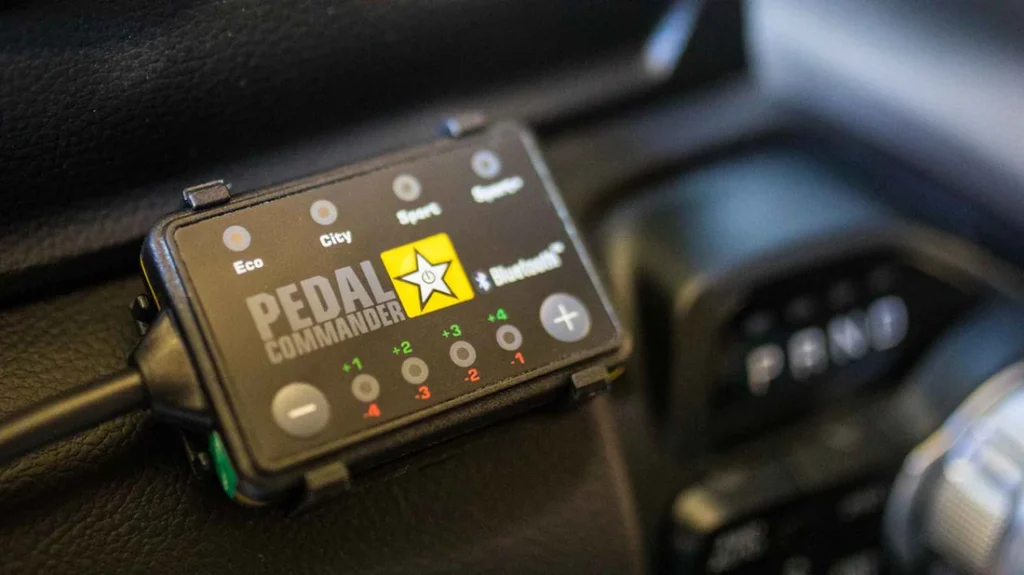
Specs and Features
The Pedal Commander is renowned for its user-friendliness and extensive customization options:
- Four Driving Modes: The device offers four distinct modes, each designed for different driving scenarios:
- ECO Mode: This mode softens throttle response, making it less sensitive. It’s ideal for maximizing fuel economy, navigating heavy traffic, or for off-roading where precise, controlled power delivery is essential for traction. It can also serve as a “Valet Mode.”
- CITY Mode: Designed for daily driving, City mode provides a snappier, more active throttle response that many users describe as how the vehicle “should have left the factory.” It aims for a near 1:1 pedal-to-throttle acceleration ratio.
- SPORT Mode: For spirited driving, Sport mode significantly sharpens the gas pedal’s response, delivering instant and full power. The throttle valve opens much faster than stock.
- SPORT+ Mode: This is the most extreme setting, offering the most aggressive throttle response for track days or performance driving.
- 36 Sensitivity Levels: Each of the four driving modes has nine adjustable sensitivity levels (+4 to -4), allowing for a total of 36 unique settings. This extensive customization ensures drivers can fine-tune the throttle response to their exact preference and driving style.
- Bluetooth Connectivity & Mobile App: Most modern Pedal Commander units come with Bluetooth capability, allowing you to control and adjust settings directly from a free smartphone app (available for iOS and Android). This provides seamless on-the-fly adjustments without needing to reach the physical unit.
- Anti-Theft Mode: A notable security feature, the anti-theft mode disables your vehicle’s gas pedal, preventing unauthorized use. This adds an extra layer of protection against theft.
- Easy Plug-and-Play Installation: The Pedal Commander is designed for a straightforward DIY installation, typically taking 10-15 minutes using OEM factory harnesses. No wire cutting, splicing, or permanent modifications are required, making it a non-invasive upgrade.
- Vehicle-Specific Programming: Unlike generic devices, the Pedal Commander is individually programmed for specific make, model, engine specs, and transmission, ensuring optimal performance and compatibility.
- No Warranty Void: Because it doesn’t interfere with the ECU or alter engine parameters, the Pedal Commander generally does not void your vehicle’s factory warranty.
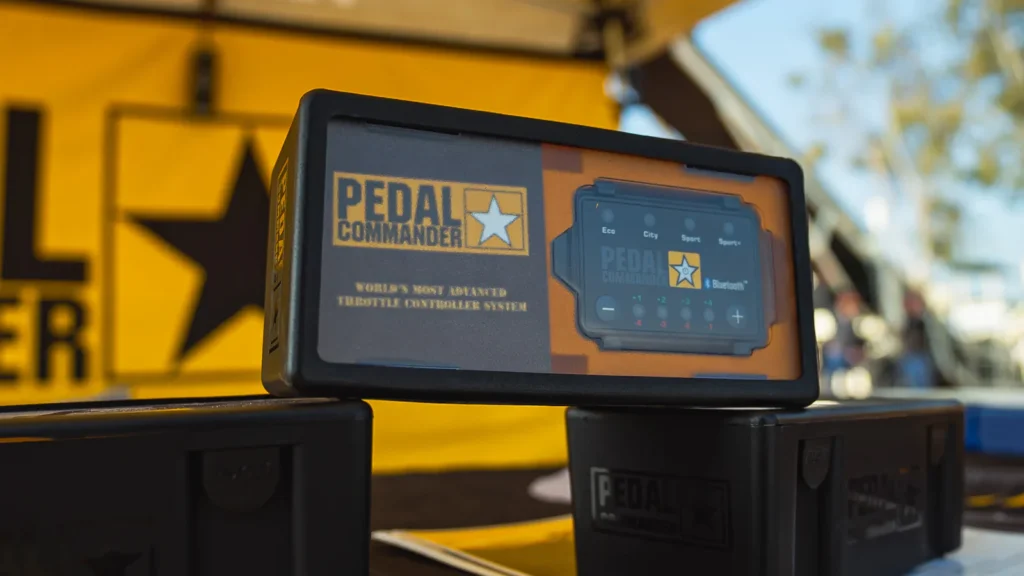
Pricing
The pricing for the Pedal Commander typically ranges from $299 to $349 USD, depending on the vehicle model and any ongoing promotions. While this might seem like a significant investment for a “throttle controller,” many users find the enhanced driving experience justifies the cost.
Who Would Benefit from The Pedal Commander?
The Pedal Commander can significantly enhance the driving experience for a wide range of individuals:
- **Drivers Frustrated by Throttle Lag: ** This is the primary target audience. If your modern car or truck feels sluggish or unresponsive off the line, the Pedal Commander will make a noticeable difference.
- Enthusiasts Seeking a More Engaging Drive: For those who enjoy a spirited drive and want their vehicle to feel more direct and connected, the increased throttle sensitivity can be highly satisfying.
- Owners of Heavier Vehicles (Trucks, SUVs): Larger vehicles often exhibit more pronounced throttle lag. The Pedal Commander can make them feel lighter and more responsive, especially when accelerating from a stop or merging onto highways.
- Off-Roaders (with ECO Mode): The ECO mode’s subdued throttle response provides greater control over power delivery, which is crucial for maintaining traction and navigating challenging terrain.
- Daily Commuters (with CITY Mode): The City mode offers a smoother, more responsive daily driving experience without being overly aggressive.
- Those Who Want Customizable Control: The 36 sensitivity levels allow drivers to truly tailor their vehicle’s response to their exact preferences.
- Individuals Concerned about Warranty: Since it’s a non-invasive modification, it’s a popular choice for those who want performance enhancement without risking their vehicle’s warranty.
Who Would Not Benefit?
While highly effective for many, the Pedal Commander isn’t for everyone:
- Drivers Who Prefer a Stock, Gradual Throttle Response: Some individuals prefer the factory-set, linear acceleration curve and might find the increased sensitivity of the Pedal Commander (especially in Sport or Sport+ modes) too abrupt or “touchy.”
- Those Expecting Horsepower Gains: It’s crucial to reiterate that the Pedal Commander does not increase horsepower or torque. If you’re looking for raw power gains, you’ll need an engine tune or other performance modifications.
- Individuals on a Very Tight Budget: While not the most expensive modification, its price point might be a deterrent for some, especially when cheaper, albeit less feature-rich, alternatives exist.
- Drivers Who Already Have a Custom Engine Tune: Some comprehensive engine tunes already include optimized throttle mapping. In such cases, a Pedal Commander might offer diminishing returns or even conflict with the existing tune.
- Those with Older, Cable-Throttle Vehicles: The Pedal Commander is designed for drive-by-wire systems. Vehicles with traditional mechanical throttle cables will not benefit from this device.
- Drivers Who Are Prone to Aggressive Driving: While it enhances responsiveness, constant aggressive driving in higher modes can lead to increased fuel consumption and potentially more wear on components if not driven judiciously.
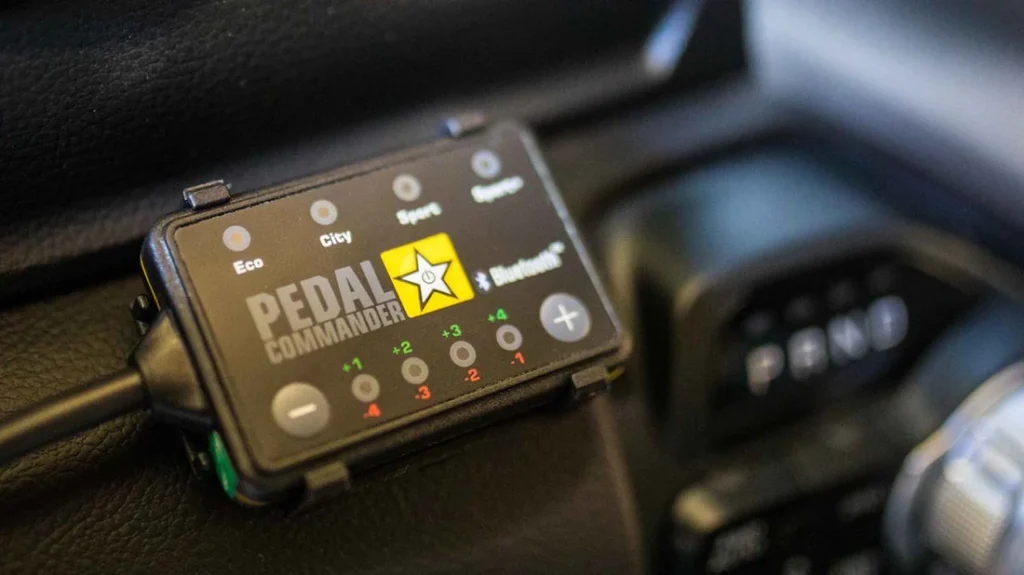
Comparison Chart with Competitors
The throttle response controller market has several contenders. Here’s a brief comparison of Pedal Commander with some of its notable competitors:
| Feature/Product | Pedal Commander | Banks PedalMonster | Sprint Booster | Roar Pedal | ShiftPower |
|---|---|---|---|---|---|
| How it Connects | In-line with accelerator pedal sensor | In-line with accelerator pedal sensor & OBD-II | In-line with accelerator pedal sensor | In-line with accelerator pedal sensor | In-line with accelerator pedal sensor |
| Power Source | Low-current +5V pedal reference circuit | Dedicated 12V from OBD-II | Low-current +5V pedal reference circuit | Low-current +5V pedal reference circuit | Low-current +5V pedal reference circuit |
| Driving Modes | Eco, City, Sport, Sport+ | City, Sport, Track, Valet, Work | Sport, Race, Off | Eco, City, Sport, Sport+ | Off, Valet, Dynamic, Sport, Super Sport, Race |
| Sensitivity Levels | 36 (9 per mode) | Multiple (variable based on speed/gear) | Limited (3 per mode) | Limited | Multiple |
| Bluetooth App | Yes | Yes | No (typically physical button) | Yes | Yes |
| Anti-Theft Feature | Yes | Yes (via app) | No | Yes | Yes |
| Unique Features | Vehicle-specific maps, 3-sec ECO press | OBD-II data for speed/gear, ActiveSafety relays | Compact design | Generally more budget-friendly | Customizable curves, easy installation |
| Warranty Impact | Generally no | Generally no | Generally no | Generally no | Generally no |
| Approx. Price | $299 – $349 | $300 – $400+ (often higher) | $280 – $320 | $150 – $250 | $250 – $350 |
Note: Pricing and features can vary by vehicle model and specific product generation. Always check the manufacturer’s website for the most current information.
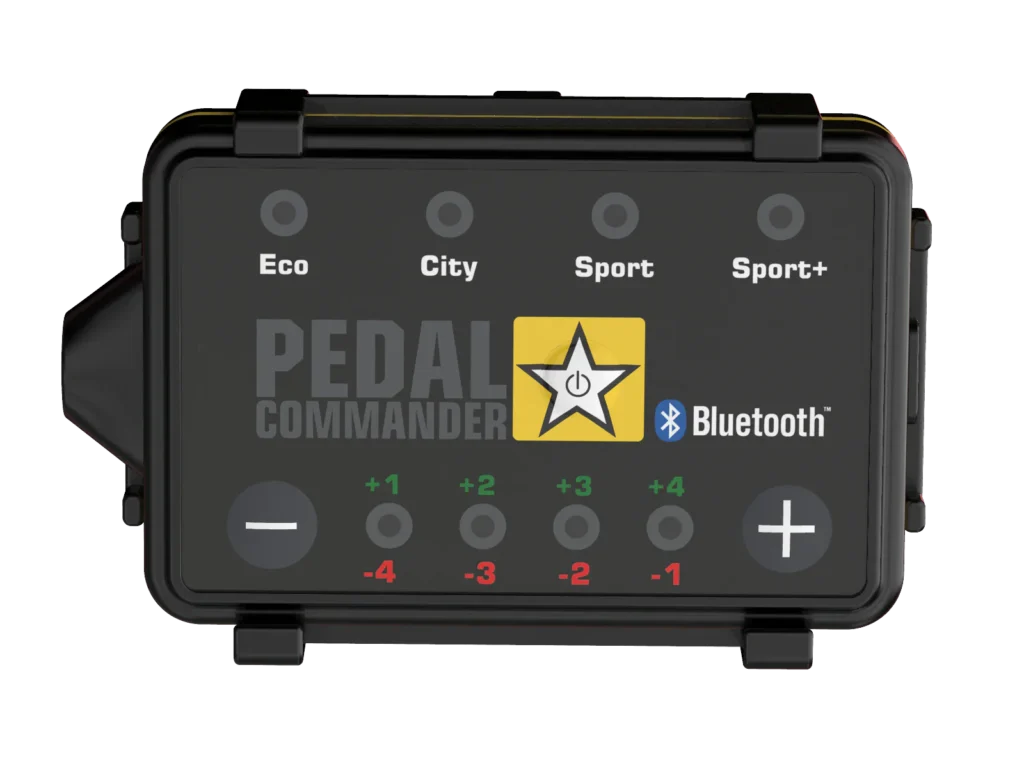
Q&A about Throttle Response Controllers
Q1: Will the Pedal Commander increase my car’s horsepower or torque? A1: No, the Pedal Commander does not increase horsepower or torque. It works by enhancing the throttle response, giving you quicker access to your vehicle’s existing power. It makes the car feel faster and more responsive, but it doesn’t add actual engine output.
Q2: Is the Pedal Commander safe for my vehicle? Will it void my warranty? A2: The Pedal Commander is generally considered safe. It operates within the vehicle’s existing electronic parameters and does not modify the ECU or engine. Because it’s a plug-and-play device that can be easily removed, it typically does not void your factory warranty. However, it’s always advisable to check with your specific dealership or manufacturer.
Q3: Is installation difficult? A3: No, installation is very straightforward. It’s a plug-and-play process that involves disconnecting your accelerator pedal’s harness and plugging the Pedal Commander in-line. Most installations take 10-15 minutes with no special tools required.
Q4: Can I use the Pedal Commander with an existing engine tune or chip? A4: In most cases, yes. The Pedal Commander modifies the signal from the pedal, while engine tunes typically modify the ECU’s fuel, timing, and other engine parameters. They generally work independently. However, if your tune already includes aggressive throttle mapping, the effects of the Pedal Commander might be less noticeable.
Q5: Will it improve my fuel economy? A5: The ECO mode is designed to soften throttle response, which can lead to improved fuel economy if driven conservatively. By reducing aggressive acceleration, it helps manage fuel consumption. However, using Sport or Sport+ modes will likely decrease fuel economy due to the increased throttle sensitivity encouraging more spirited driving.
Q6: What if I don’t like it? A6: Most reputable manufacturers, including Pedal Commander, offer a return policy (e.g., 30-day money-back guarantee). It’s always best to check their specific return policy before purchasing.
Q7: Can a throttle controller cause a “limp mode” or check engine light? A7: While rare with quality units like the Pedal Commander, some users of certain throttle controllers have reported instances of check engine lights or limp mode, often due to faulty units or improper installation. The Pedal Commander is designed to avoid this by operating within safe voltage ranges. If an issue occurs, removing the device usually resolves it.

If car tech is your thing, then don’t miss our car tech review section
Auto Tech
The 2025 Volkswagen ID. Buzz: The Electric Minivan That Brings Back the Counterculture Icon
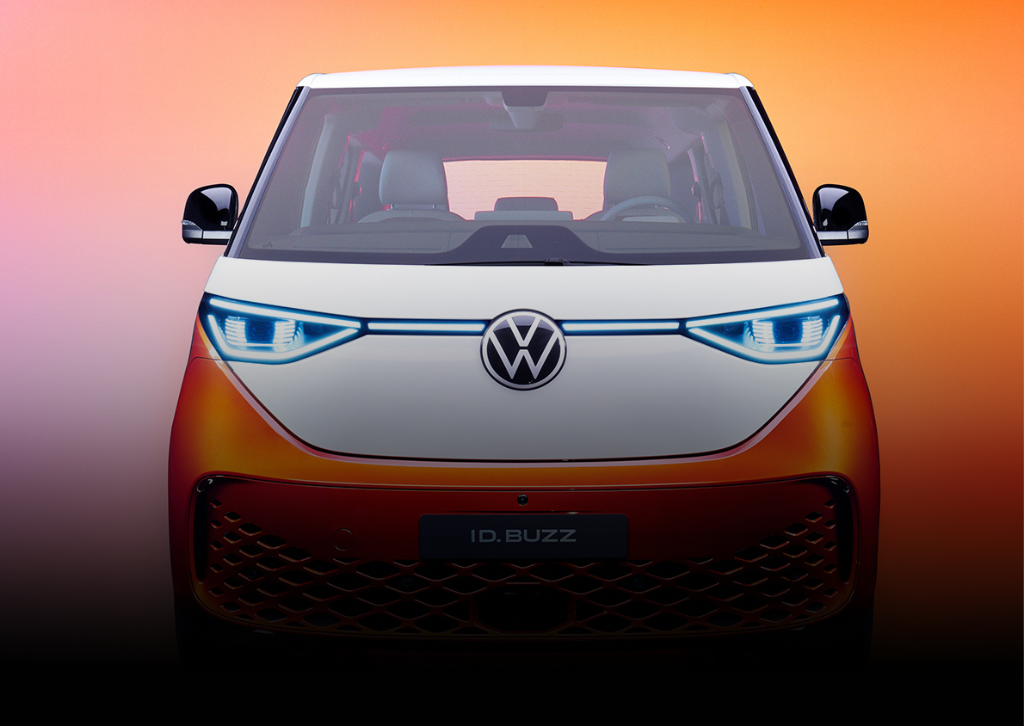
After years of anticipation and nostalgic teasing, Volkswagen has finally delivered on its promise to resurrect one of automotive history’s most beloved icons. The 2025 ID. Buzz isn’t just another electric vehicle joining an increasingly crowded market—it’s a bold reimagining of the classic VW Microbus for the modern era, blending retro charm with cutting-edge electric technology.
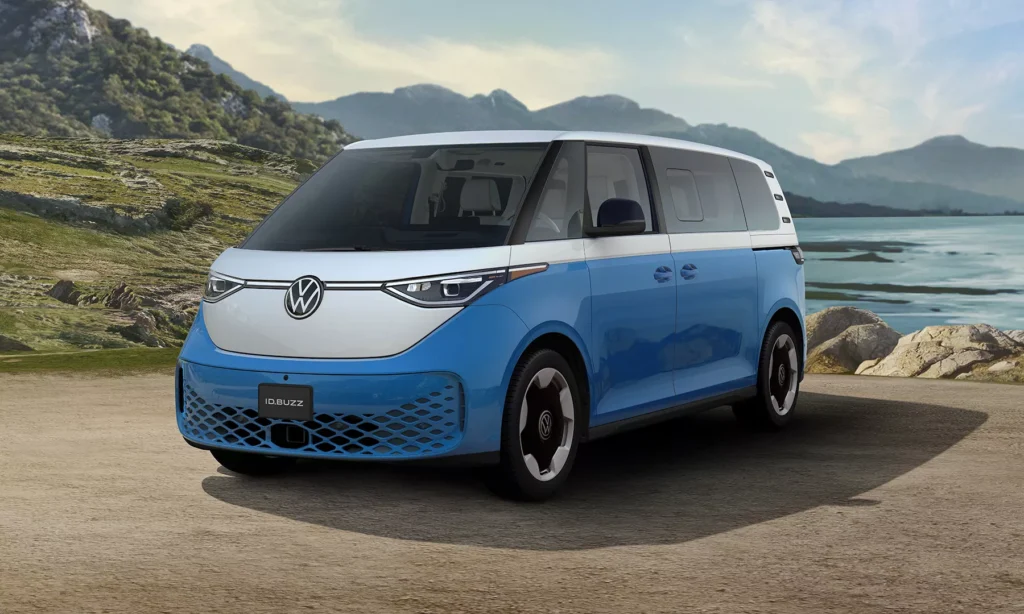
A Design That Turns Heads
The ID. Buzz makes no attempt to hide its heritage. From the moment you see it, the two-tone paint scheme, short overhangs, and upright stance immediately evoke memories of the original 1960s Type 2 bus that became synonymous with surf culture, road trips, and freedom. But this is no simple retro pastiche. Volkswagen has created something that feels both familiar and thoroughly contemporary, with smooth surfaces, flush-mounted handles, and LED lighting that give it a distinctly futuristic character.
The front fascia features a illuminated VW logo and distinctive V-shaped light bar that’s become a signature of the ID. family. Available in a palette of vibrant colors—some with contrasting roofs—the ID. Buzz has the kind of visual presence that makes people smile when they see it on the road.
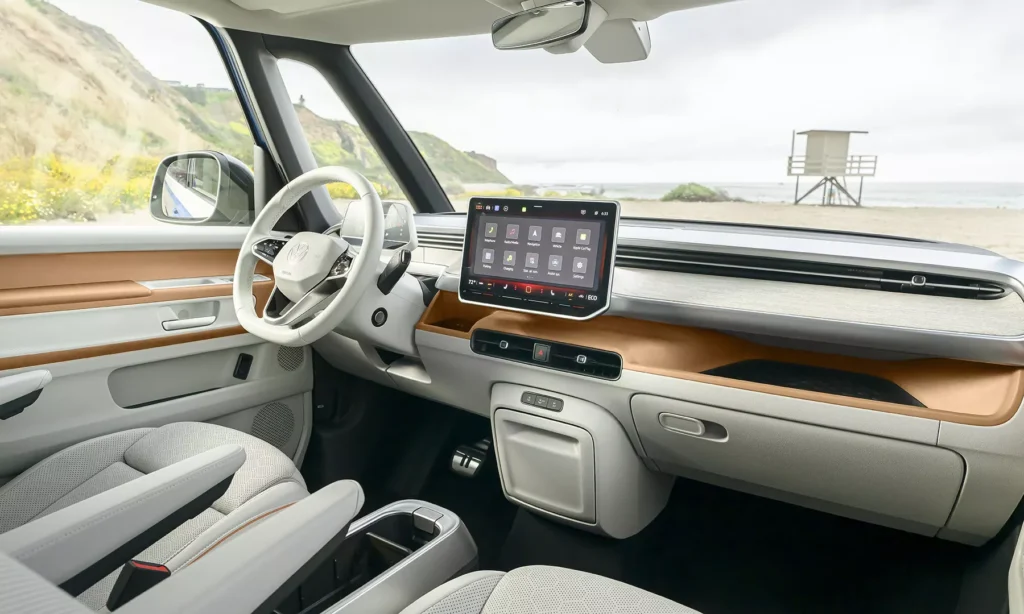
Two Configurations for Different Needs
Volkswagen offers the ID. Buzz in two distinct wheelbases. The standard version comes with two rows of seating and accommodates five passengers, while the long-wheelbase variant adds a third row for seven-passenger capacity. This flexibility allows buyers to choose between maximizing cargo space or passenger capacity depending on their lifestyle needs.
The interior is remarkably spacious, thanks to the skateboard-style electric platform that eliminates the need for a transmission tunnel and allows the wheels to be pushed to the corners. This creates an airy, lounge-like atmosphere that harks back to the original Microbus’s reputation for generous interior volume. The dashboard is clean and minimalist, dominated by a large touchscreen infotainment system and a smaller digital instrument cluster.
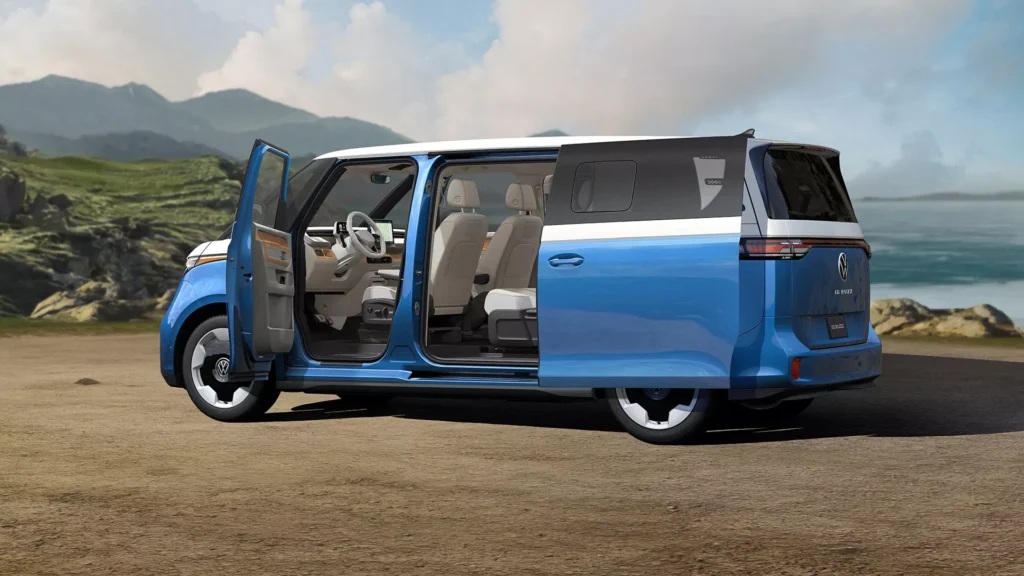
Electric Performance and Range
Under the floor sits a 91 kWh battery pack that powers a rear-mounted electric motor producing 282 horsepower. This setup provides brisk acceleration that belies the ID. Buzz’s substantial size—it can sprint from 0-60 mph in around 6 seconds. All-wheel drive versions add a front motor for enhanced traction and performance.
Range is estimated at approximately 230-260 miles depending on configuration and driving conditions, which is competitive for a vehicle of this size and should prove adequate for most family duties and daily driving. The ID. Buzz supports DC fast charging at rates up to 170 kW, allowing for 10-80% charges in roughly 30 minutes at compatible charging stations.
Technology and Features
Inside, the ID. Buzz comes loaded with modern amenities. The infotainment system features wireless Apple CarPlay and Android Auto, navigation, and voice controls. Available features include a panoramic glass roof, premium sound system, and a full suite of driver assistance technologies including adaptive cruise control, lane-keeping assist, and automated emergency braking.
The rear doors feature a power sliding mechanism, making entry and exit easier in tight parking spaces—a practical touch for families. The cargo area is generous, and with the rear seats folded, the ID. Buzz can swallow impressive amounts of gear, making it genuinely versatile for everything from camping trips to home improvement store runs.
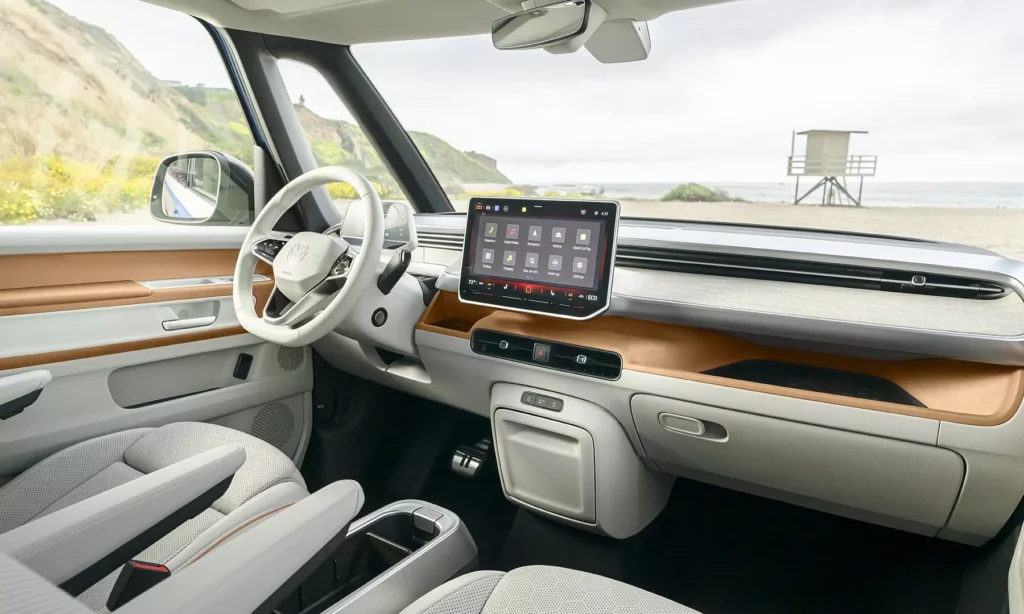
The Verdict
The 2025 Volkswagen ID. Buzz represents something increasingly rare in today’s automotive landscape: a vehicle with genuine personality. In a market dominated by anonymous crossovers and look-alike SUVs, the ID. Buzz dares to be different, fun, and emotionally engaging.
It won’t be the cheapest electric vehicle option, with pricing starting in the mid-$60,000 range, but it offers something most competitors don’t—a sense of joy and nostalgia wrapped in practical, modern packaging. For families seeking an electric vehicle that doesn’t compromise on space or style, or for anyone who’s ever dreamed of owning a classic VW bus but wants modern reliability and zero emissions, the ID. Buzz delivers on its promise.
Volkswagen has managed to bottle lightning twice, creating a modern classic that honors its heritage while moving boldly into an electric future. The ID. Buzz proves that going electric doesn’t mean sacrificing character—sometimes it means amplifying it.

The best EV Reviews are here on www.thetechreview.net
Auto Tech
The Electric Revolution Is Here: An In-Depth Review of the 2025 Chevrolet Silverado EV
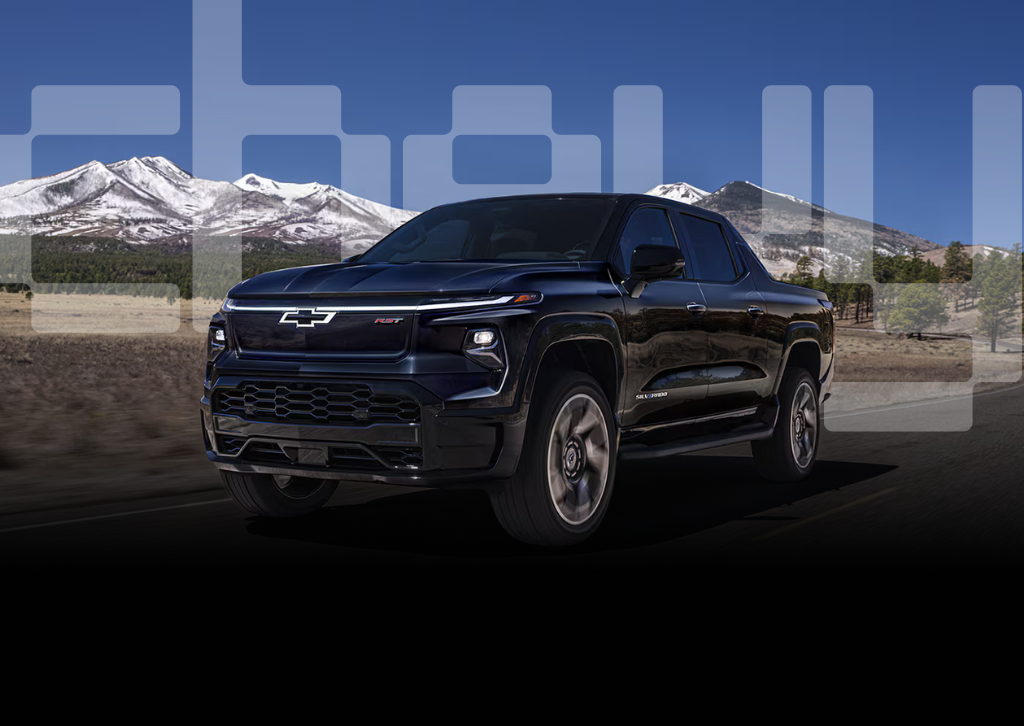
2025 Chevrolet Silverado EV
It’s no secret that the future of the automotive industry is electric, but for the longest time, the pickup truck segment seemed to be the last frontier to be fully conquered. That’s all changed, and no one is taking the electric truck game more seriously than Chevrolet. We had the opportunity to spend a week with the 2025 Chevrolet Silverado EV—specifically, the LT Extended Range model—and it’s clear that this isn’t just an electrified Silverado; it’s a new kind of vehicle designed to be a leader in its class. From its impressive performance to its innovative cabin and surprising versatility, this truck is ready to challenge perceptions and win over the hearts of truck enthusiasts and EV newcomers alike.
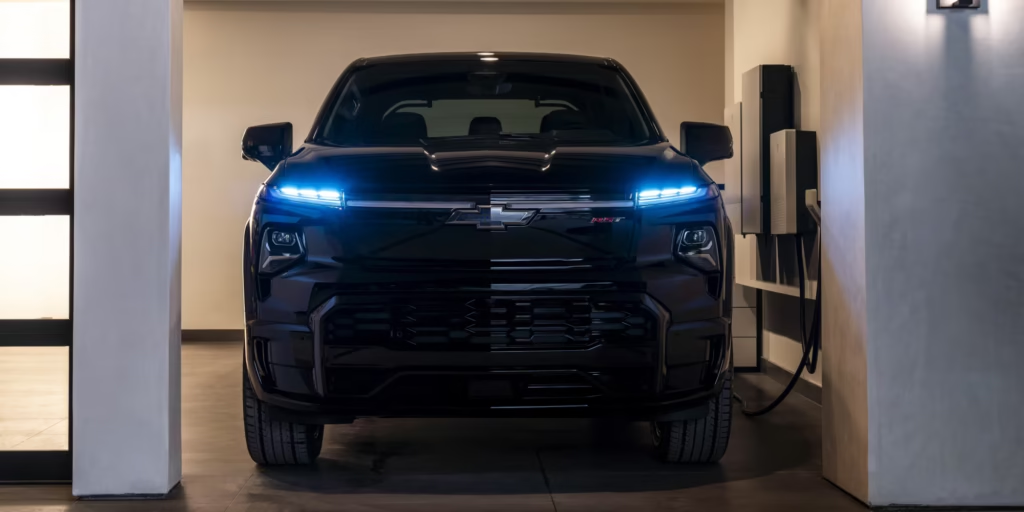
The Test Drive: A Big Truck with Nimble Moves
The moment you get behind the wheel of the Silverado EV, its size is immediately apparent. This is a big, heavy truck, with a curb weight approaching 8,500 pounds in our test model. But what’s truly remarkable is how well it hides that heft. Thanks to its standard all-wheel drive and available four-wheel steering, the Silverado EV handles with a surprising agility for a vehicle of its size. The rear-wheel steering, a feature we found universally acclaimed in GM’s large EV trucks, makes maneuvering in tight parking lots and navigating city streets far more manageable. While we wouldn’t call it “nimble,” it’s certainly more graceful than its physical dimensions would suggest.
The acceleration is, in a word, phenomenal. In its default drive mode, the power is more than sufficient for everyday driving. But engage the “Wide Open Watts” (WOW) mode, and this behemoth transforms into a sports car-like sprinter, hitting 0 to 60 mph in a blistering 4.2 seconds. This instant torque is not just for fun; it makes merging onto highways and overtaking traffic a breeze.
Chevy’s regenerative braking is also one of the best in the business. The system is smooth, intuitive, and seamlessly blends with the friction brakes, making one-pedal driving not only possible but enjoyable. We managed to bring the truck to a stop from 70 mph in just 196 feet, which is impressive given its monumental mass.
Inside the Cabin: A Connected and Comfortable Command Center
Stepping inside the Silverado EV, you’re greeted by a cabin that feels both familiar and futuristic. The LT model we drove provided a significant upgrade from the work-truck trims, featuring power-adjustable, heated, and ventilated front seats, heated rear seats, and a seven-speaker Bose stereo. The overall feel is one of comfort and spaciousness, with plenty of room for both front and rear passengers to stretch out.
The centerpiece of the interior is the massive, reconfigurable dashboard. The LT trim features a huge 17.7-inch infotainment touchscreen paired with a large 11.0-inch driver information display. The Google-based infotainment system is intuitive and responsive, seamlessly integrating with Google Maps for navigation and Google Assistant for voice commands. It’s a fantastic system, but one notable drawback is that only the smaller infotainment screen units come with Apple CarPlay and Android Auto compatibility, forcing you to rely on the native Google navigation on the larger screens.
One of our favorite design choices is the column-mounted shifter, which opens up a cavernous storage bin between the dashboard and the center armrest, a very practical touch. The lockable, weatherproof eTrunk in the front is also a fantastic addition, offering a secure space for cargo with a 120-volt outlet for powering tools or devices.
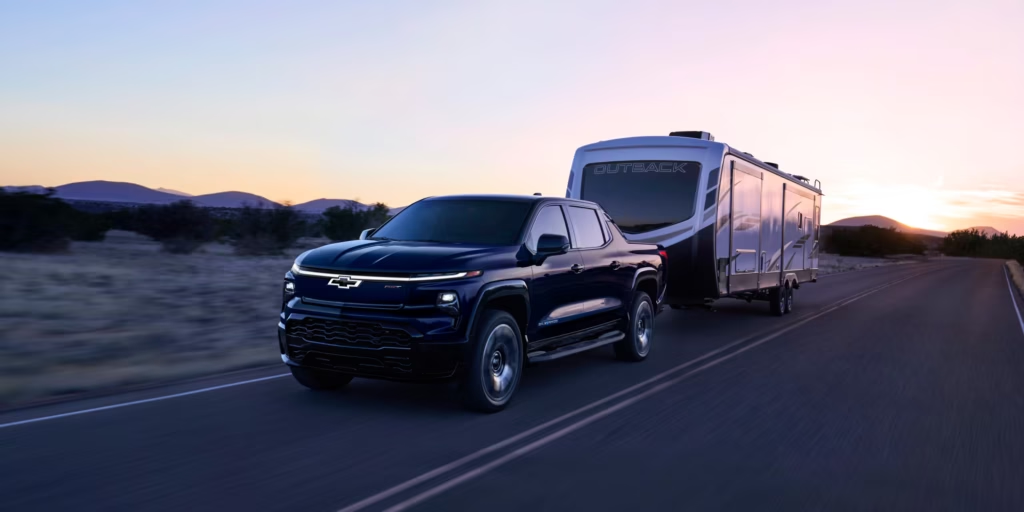
Specifications: Range, Charging, and Performance
The Silverado EV offers a variety of configurations, with a range of up to 492 miles on the Max Range battery in the Work Truck trim. Our Extended Range LT model had an EPA-estimated range of 408 miles, though our real-world 75-mph highway test saw a range closer to 310 miles. It’s important to note that these figures can vary greatly with driving style, load, and terrain.
Recharging is a key concern for any EV owner, and the Silverado EV’s Ultium platform handles it well. It supports DC fast charging up to 350 kW, allowing you to add a GM-estimated 100 miles of range in just 10 minutes at a compatible public fast-charging station. On a Level 2 home charger, a full charge from near empty could take around eight to ten hours, making it perfect for overnight charging.
Here are the key specs for the 2025 Silverado EV:
- Horsepower (RST): Up to 754 hp
- Torque (RST): Up to 785 lb-ft
- 0-60 mph (RST/WT): 4.1 seconds (WOW mode) / 5.4 seconds
- Max Towing Capacity: 12,500 lbs
- Payload Capacity: 1,800 lbs
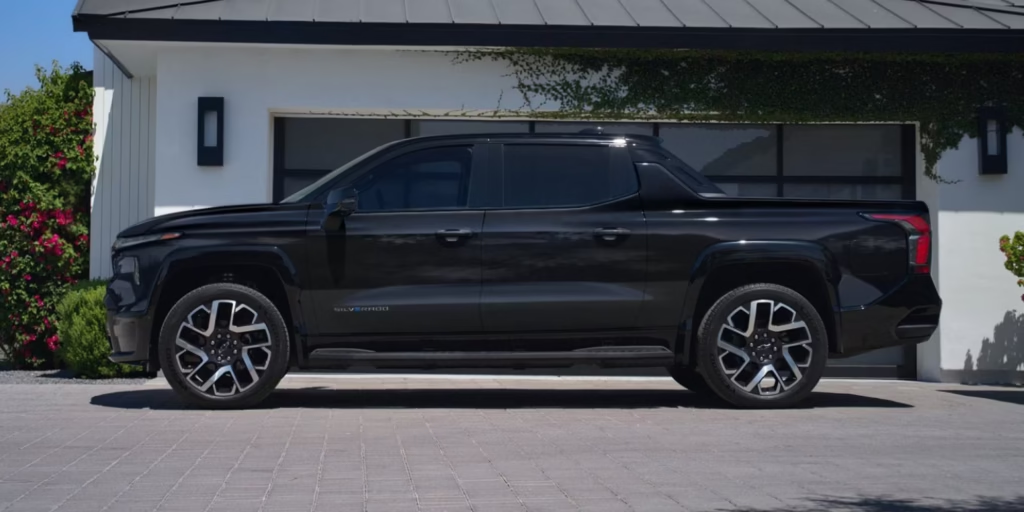
Ride Quality and Practicality
The Silverado EV’s ride quality is a mixed bag. While it’s certainly comfortable on smooth surfaces, we did notice more pitch and head toss than we would have expected, a possible side effect of its sheer weight and suspension tuning. However, the available Adaptive Air Ride Suspension (on the RST model) does an excellent job of smoothing out rough roads and can adjust the ride height for better aerodynamics or ground clearance.
In terms of practicality, the Silverado EV shines. The innovative Multi-Flex Midgate allows you to extend the bed into the cabin by folding down the rear seats, increasing the total load floor length from 5’11” to an impressive 10’10”. The Multi-Flex Tailgate offers six different configurations, making it easier than ever to load, unload, and secure cargo. It’s clear that Chevrolet paid close attention to the real-world needs of truck owners when designing this vehicle.
Pros and Cons
| Pros | Cons |
|---|---|
| Instant Torque & Acceleration: Incredibly quick for a truck of its size. | Highway Range: Real-world highway range may be lower than EPA estimates. |
| Massive Infotainment System: Large, responsive, and Google-integrated. | Limited Smartphone Integration: No Apple CarPlay or Android Auto with the large screen. |
| Innovative Midgate & Tailgate: Adds incredible versatility for hauling. | Ride Quality: Can feel bouncy or harsh at times without the adaptive air suspension. |
| Fast Charging: Adds 100 miles of range in just 10 minutes. | Efficiency: Very heavy and thus less efficient than smaller EVs. |
| Super Cruise: The best hands-free driving system on the market. | Cost: Starting price is higher than many comparable gas-powered trucks. |
Competition Comparison
| Feature | 2025 Chevrolet Silverado EV | 2025 Ford F-150 Lightning | 2025 Rivian R1T |
|---|---|---|---|
| Base Range (Est.) | 282 – 492 miles | 240 – 320 miles | 270 – 420 miles |
| Max Horsepower | 754 hp | 580 hp | 1,025 hp |
| Towing Capacity | Up to 12,500 lbs | Up to 10,000 lbs | Up to 11,000 lbs |
| 0-60 mph | 4.1 sec (WOW) | ~4.0 sec (Extended Range) | 3.0 sec (Quad-Motor) |
| Unique Features | Multi-Flex Midgate, eTrunk | Mega Power Frunk, Pro Power Onboard | Gear Tunnel, Tank Turn (future), Quad-Motor |
| Tech Integration | Google Built-in | SYNC 4A (with CarPlay/AA) | In-house system (no CarPlay/AA) |
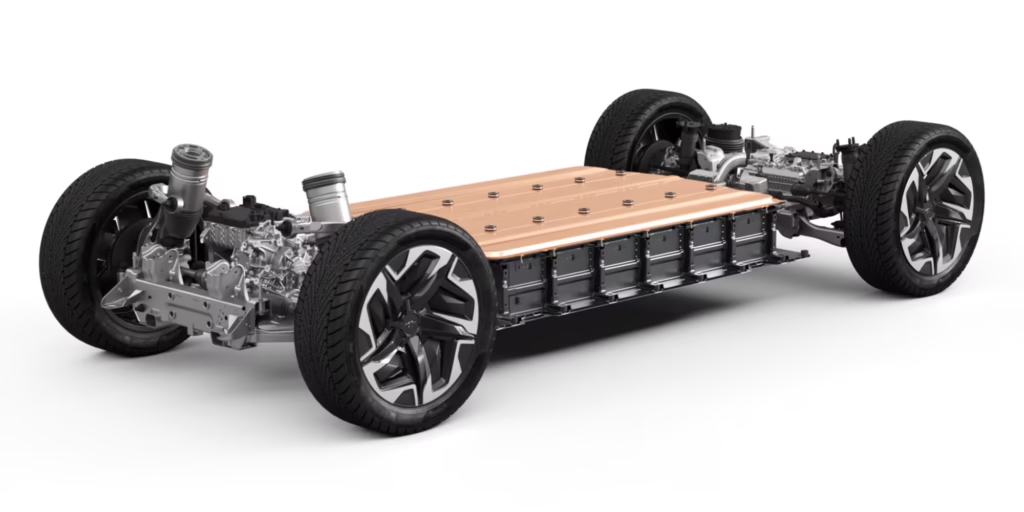
Q&A: Your Top Questions Answered
- How does the Silverado EV perform off-road? The Silverado EV’s all-wheel drive and available adaptive air suspension make it highly capable for light to moderate off-roading. Its sheer size and weight, however, can be a limiting factor in more challenging terrain.
- Is the Silverado EV a unibody or body-on-frame? The Silverado EV is built on GM’s Ultium platform, which is an all-electric, dedicated chassis. It is not a unibody like some competitors, but a body-on-frame design, similar to its gas-powered counterparts. This gives it the robust, heavy-duty feel that traditional truck buyers expect.
- Can the Silverado EV power my home or tools? Yes, with the optional PowerBase off-board power accessory, the Silverado EV can deliver up to 10.2 kW of power through its various outlets, making it a powerful generator for a campsite, a job site, or even your home during a power outage.
- Is the Silverado EV available with a traditional bed? Yes, the standard bed length is 5’11”, which is a typical size for a crew cab truck. The real innovation lies in the Multi-Flex Midgate, which allows you to extend the bed’s length for carrying longer items while still keeping the tailgate closed.
- How does the Silverado EV handle in cold weather? Like all EVs, the Silverado EV will see a reduction in range in very cold temperatures due to the impact on battery efficiency and the energy required for cabin heating. However, its advanced battery management system and robust Ultium platform are designed to mitigate these effects.
- Are there any known quality control issues? While the Silverado EV is still a relatively new model, some early reviews and consumer feedback have mentioned issues with camera quality and potential water leaks around the windshield. It’s always a good idea to check specific owner forums and reviews for long-term reliability.
- Can I tow with it? How does that affect range? The Silverado EV has an impressive max towing capacity of 12,500 pounds. However, towing will significantly impact the vehicle’s range. Expect a range reduction of around 50% or more when towing a heavy load, especially at highway speeds.
- What are the different trim levels available? For 2025, the Silverado EV lineup has expanded to include the base Work Truck (WT), the mid-range LT, and the top-of-the-line RST. The trims offer different battery sizes and feature sets, with the LT and RST providing more comfort and technology.

The best selection of EV car reviews here at www.TheTechReview.net
Auto Tech
Vanderhall Electrifies the Open Road: Introducing the All-Electric SantaRosa
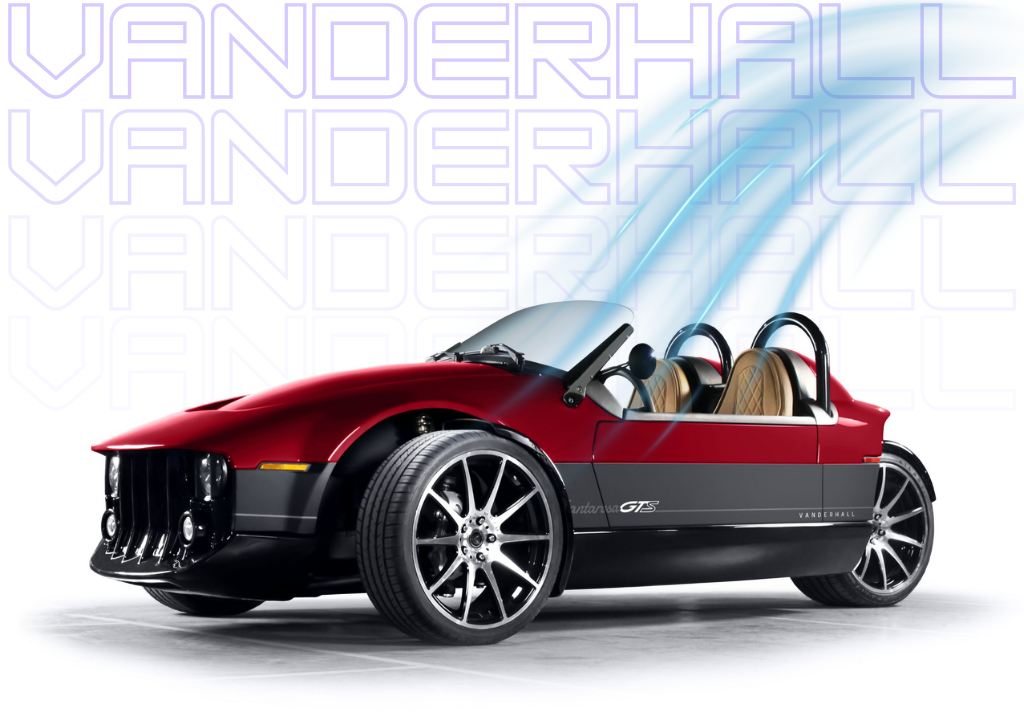
Vanderhall Santarosa
For years, Vanderhall has carved a unique niche in the automotive world, offering an exhilarating, open-air driving experience unlike any other. Known for their distinctive three-wheeled autocycle designs, these American-made machines have captivated enthusiasts with their blend of classic roadster aesthetics and modern performance. Until now, that performance has been powered by internal combustion engines, but a new era is dawning. Vanderhall is officially embracing the electric revolution with the highly anticipated, all-electric SantaRosa.
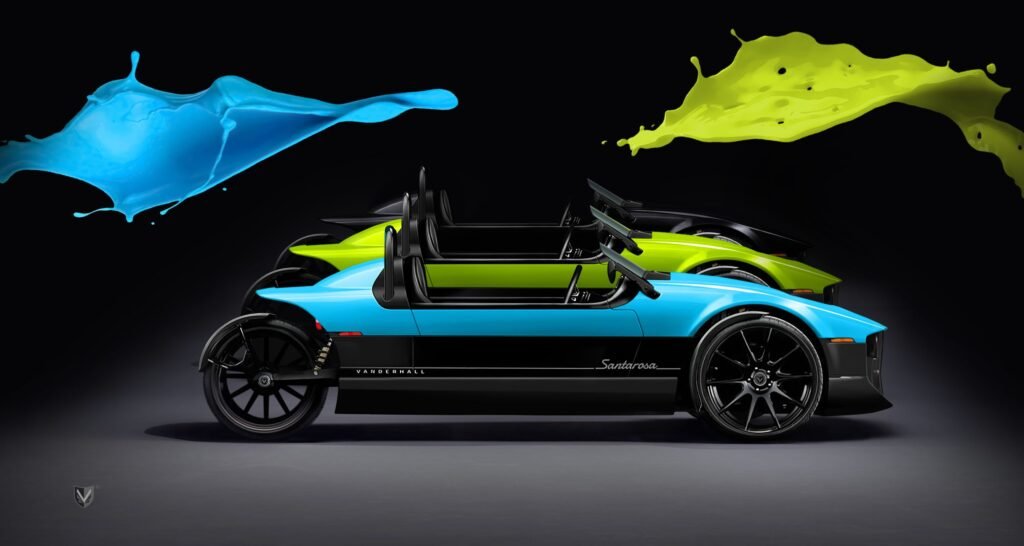
A Legacy of Gasoline-Powered Thrills
Vanderhall’s journey began with models like the Laguna, Venice, and Carmel, each a testament to the brand’s commitment to raw driving pleasure. These early iterations, often powered by turbocharged gasoline engines sourced from General Motors, delivered impressive acceleration and agile handling. The characteristic roar of the engine, the wind in your hair, and the direct connection to the road were hallmarks of the Vanderhall experience. Owners reveled in the blend of sportiness and retro charm, making these gas-powered autocycles beloved for weekend cruises and spirited drives alike.
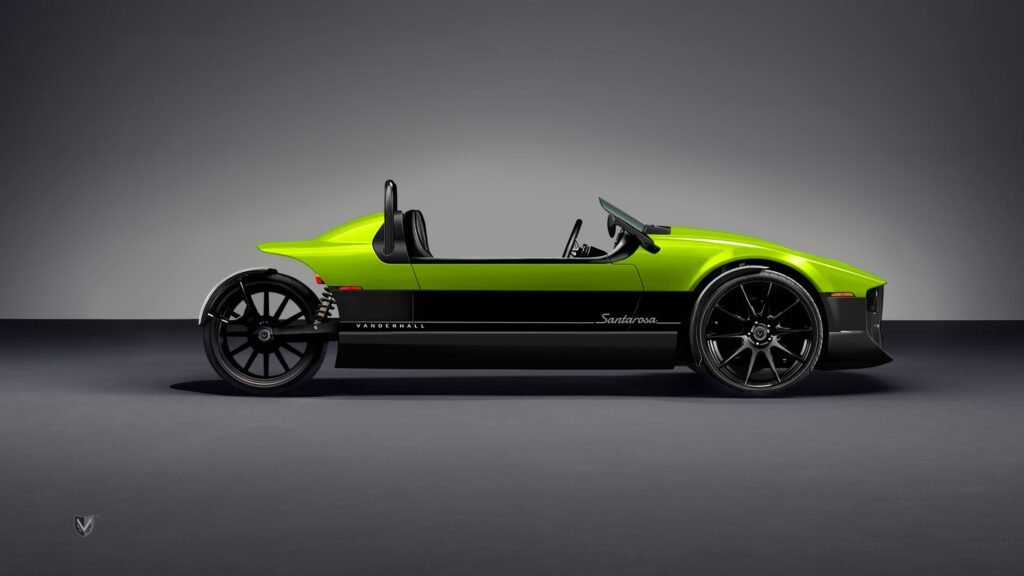
The Silent Revolution: Vanderhall Goes Electric
The introduction of the SantaRosa marks a pivotal moment for Vanderhall. This move to an all-electric powertrain signals not only a commitment to sustainability but also a bold step into the future of performance driving. The silence of electric propulsion will undoubtedly transform the driving experience, offering a new kind of thrill – one characterized by instant torque and a whisper-quiet ride, all while retaining the iconic open-cockpit design.
The SantaRosa: A Glimpse into the Future
While official images and full specifications are still emerging, early glimpses and reliable sources suggest the SantaRosa will be a groundbreaking addition to the Vanderhall lineup. We can expect it to retain the brand’s signature aesthetic – low-slung, aerodynamic, and undeniably eye-catching
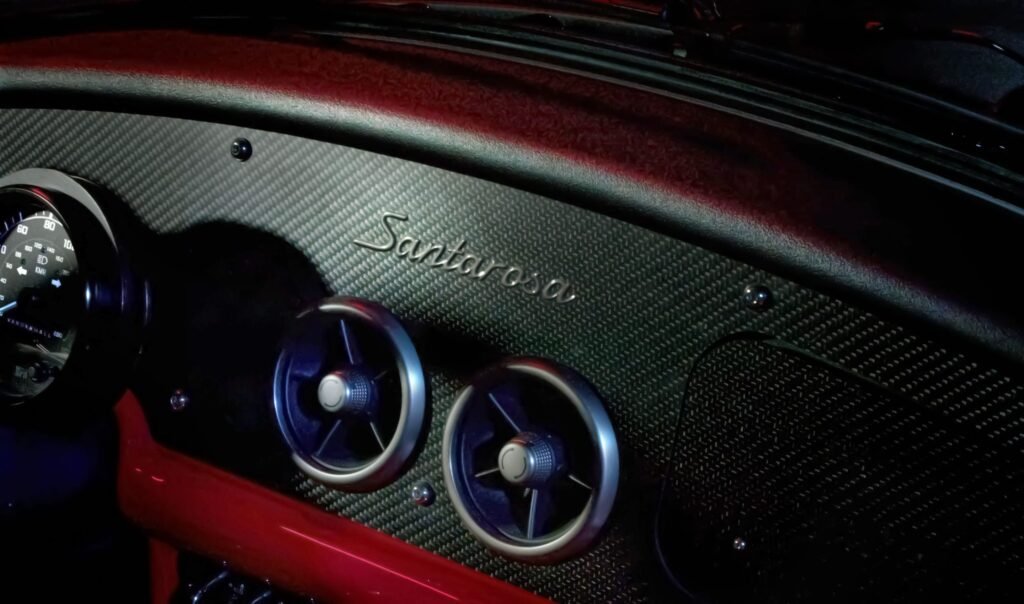
Anticipated Specs and Features:
- Electric Powertrain: The heart of the SantaRosa will be its electric motor, promising exhilarating acceleration characteristic of EVs. While specific power output figures are yet to be fully confirmed, expect performance that lives up to Vanderhall’s sporty reputation.
- Top Speed: Early indications suggest a top speed in the range of 100-110 mph (160-177 km/h), providing plenty of excitement on the open road.
- Range: One of the most critical aspects of any EV is its range. The SantaRosa is rumored to offer a substantial driving range, potentially upwards of 200 miles (320 kilometers) on a full charge. This would make it suitable for longer cruises and day trips without range anxiety.
- Battery Technology: Vanderhall is expected to utilize advanced battery technology to ensure both optimal performance and efficient charging.
- Modern Amenities: While retaining its minimalist, driver-focused ethos, the SantaRosa will likely incorporate modern conveniences. This could include a digital display for essential information, possibly a touchscreen infotainment system, and connectivity features. Regenerative braking will almost certainly be a standard feature, helping to extend the range.
- Charging: The SantaRosa will support various charging methods, likely including Level 2 home charging and DC fast charging capabilities for quicker top-ups on the go.
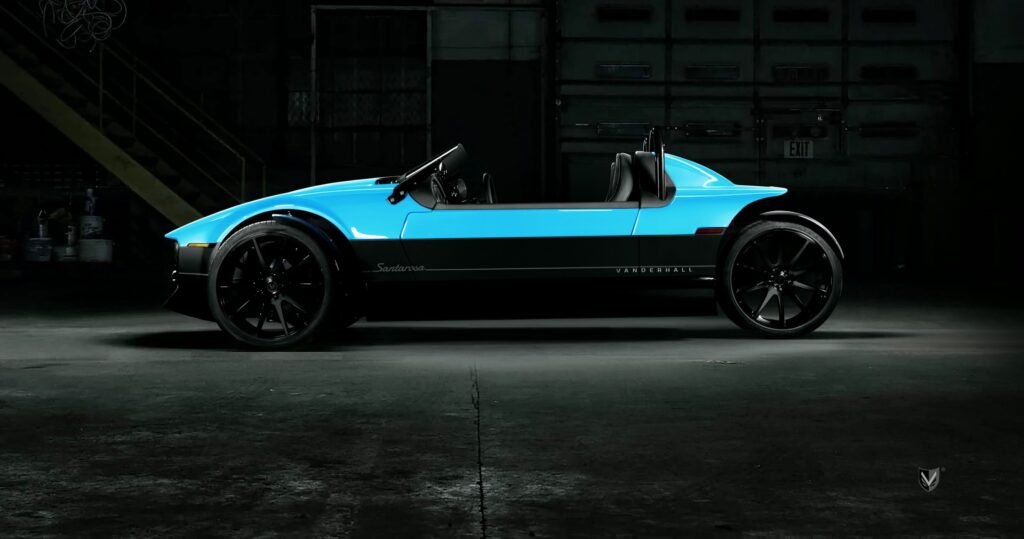
Availability
As of now, the Vanderhall SantaRosa is expected to become available to the public in late 2024 or early 2025. Vanderhall typically operates with a direct-to-consumer model and a network of authorized dealers, so potential buyers should keep an eye on official announcements for pre-order information and precise launch dates.
The Road Ahead
The all-electric SantaRosa represents a bold new chapter for Vanderhall. It blends the brand’s cherished open-air driving philosophy with the cutting-edge technology of electric propulsion. As the automotive world rapidly shifts towards electrification, Vanderhall is proving that the joy of driving, the connection to the road, and the thrill of unique design can thrive in a silent, emission-free future. The SantaRosa is poised to redefine what an electric autocycle can be, offering an electrifying and unforgettable experience to a new generation of enthusiasts.

If electric cars is your thing then click to read all our electric car reviews
-

 Photography3 months ago
Photography3 months agoSony FE 16mm f/1.8 G Review: The Ultra-Wide Prime for the Modern Creator
-

 Computers3 months ago
Computers3 months agoAsus ProArt Display 6K PA32QCV Review: A Visual Feast for Professionals
-

 Tablets5 months ago
Tablets5 months agoClash of the Titans: 13″ iPad Pro M4 vs. Samsung Galaxy Tab S10 Ultra – Which Premium Tablet Reigns Supreme?
-

 Home Tech3 months ago
Home Tech3 months agoThe Guardian of Your Threshold: An In-Depth Review of the Google Nest Doorbell
-

 Computers4 months ago
Computers4 months agoASUS Zenbook Duo: A Pretty Awesome Dual-Screen Laptop
-

 Photography4 months ago
Photography4 months agoAdobe’s “Project Indigo” is the iPhone Camera App We’ve Been Waiting For, and It’s Awesome
-

 Photography3 months ago
Photography3 months agoDJI Osmo 360 go: The Next Generation of Immersive Storytelling?
-

 Health Tech3 months ago
Health Tech3 months agoLumen Metabolism Tracker: A Deep Dive into Your Metabolic Health
-

 Computers4 months ago
Computers4 months agoApple Mac Studio Review: A Desktop Powerhouse Redefined
-

 Home Tech3 months ago
Home Tech3 months agoRevolution R180 Connect Plus Smart Toaster: More Than Just Toast?
-

 Computers4 months ago
Computers4 months agoSamsung 15.6” Galaxy Book5 360 Copilot AI Laptop: A Deep Dive into the Future of Productivity
-

 Buying Guides4 months ago
Buying Guides4 months agoThe Ultimate Workout Soundtrack: The Best Wireless Headphones for Your Fitness Journey
















